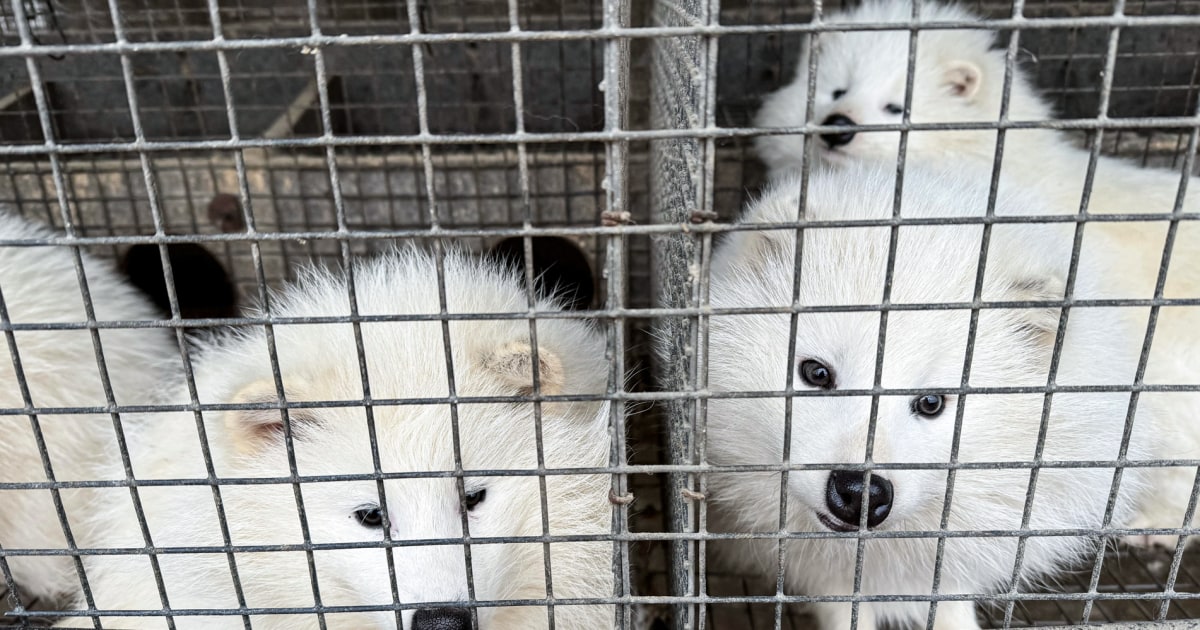Foxes hide where humans cannot find them
Created: 09/04/2022, 05:00
By: Sina Lück
Foxes in big cities are no longer a rarity.
In Berlin, a young animal has a particularly original hiding place.
And there are more and more.
Foxes are no longer a rare sight in big cities.
In the meantime, the wild animals can be found almost everywhere and look for the strangest hiding places.
They stray through authorities, get on the bus or sit on the roof - as the recent incident in Berlin-Charlottenburg proves.
But why are wild animals drawn from the forests to the big cities at all?
Foxes hide where humans cannot find them
A young fox sits on a roof in Berlin.
© Police Berlin / dpa
In Berlin, a young fox got lost on the roof of a house.
According to the police, the residents discovered the animal on a balcony in the morning hours.
From there the fox fled onto the roof.
It is not uncommon for people to encounter wildlife in cities.
On the contrary: the encounters are increasing.
More and more foxes are moving from the forests to the big cities or to the North Sea islands such as Sylt or Norderney.
Sophia Kimmig knows that places like the meadow in front of the Berlin Reichstag are particularly popular at dusk.
For several years she has been studying the life of animals in the city at the Leibniz Institute for Zoo and Wildlife Research (IZW) in the Forschungsverbund Berlin eV
"It can also happen that a fox sits on the picnic blanket in the botanical garden," the wildlife biologist tells the
Berliner Zeitung
.
Some specimens are even known to Berliners by name - such as Fuchs "Theo", who has settled in the garden at Bellevue Palace.
The Instagram community had previously been eagerly involved in finding a name.
Another fox, on the other hand, prefers to take the bus through the city.
Foxes in the city - Settlement continues
It is no different in other major German cities.
There, the colonization by the red-haired survivors is progressing more and more.
Foxes are even more common in urban areas than their conspecifics in the wild.
"In Munich-Schwabing, for example, the density of foxes is ten to 15 times higher than in the Bavarian Forest," explains Sophia Kimmig.
In rural Germany there are an average of 0.5 to 1.5 foxes per square kilometer.
The golden jackal has also made its home in Baden-Württemberg.
Foxes in the city - animals find plenty of food there
Foxes find plenty of food in the cities.
That's one of the reasons they're more attracted to it.
The diet of wild animals includes:
mice
rats
worms
Fallen fruit from gardens
waste of the people
"In the city, foxes are more collectors than hunters," explains Derk Ehlert, wildlife expert at the Berlin Senate Department for the Environment.
Apart from the food supply, however, large cities offer another advantage: the heterogeneous structure as a habitat.
"The fox doesn't necessarily need a lot of green, but above all places to retreat to, such as fallow land and fenced-in areas.
The foxes are extremely good at finding places in the city where we humans are not,” explains Sophia Kimmig.
In Bergheim, however, a fox cub urgently needs help from the people because he is wandering the streets all by himself.
However, they often misjudge the risks.
"A passer-by seems more threatening than a car," says the wildlife expert.
Places with heavy traffic, such as roads or railway lines, appear safe to them.
"They often pay for it with their lives," regrets Sophia Kimmig.
Many animals therefore do not reach their actual life expectancy of eight to nine years.
Instead, they only live for a year or two.
Foxes in the city - "For 30 years no more fox tapeworm detected"
Even if the graceful animals with the amber eyes appear scary to some people, they do not pose any danger.
“For 30 years, no fox tapeworm has been detected in Berlin.
And we haven't had any fox rabies in the city for several decades," emphasizes Derk Ehlert.
The wildlife expert knows from experience: problematic incidents are extremely rare.
“I can count on one hand the cases I am aware of over the past 20 years, and they all stem from human error.”


/cloudfront-eu-central-1.images.arcpublishing.com/prisa/DXPUIGHRZZEKNMVHLDNKFJFAMY.jpg)











/cloudfront-eu-central-1.images.arcpublishing.com/prisa/IGZ7GOCXZ5GUPAQ2HWGK6Z76BU.jpg)